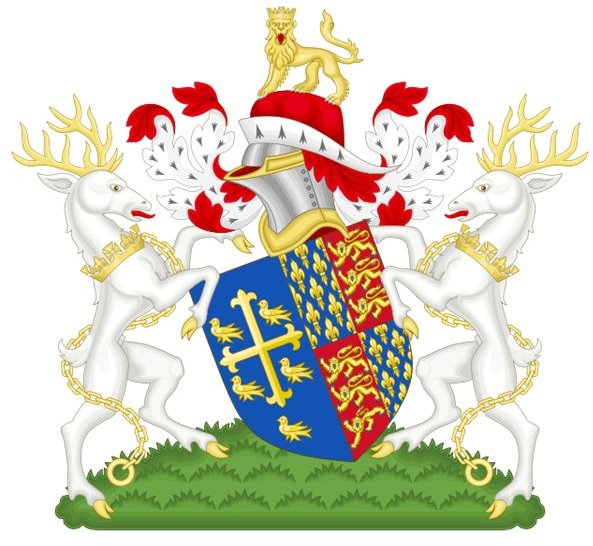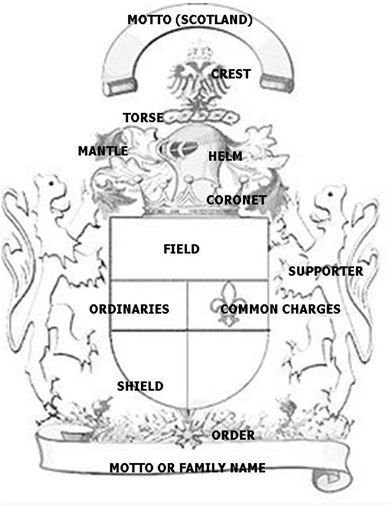Medieval Coat of Arms Lesson Plans
What is a Coat of Arms?
Coat of arms came into being in the early twelfth century. Historians dispute the exact origins; some saying coat of arms were created so that knights would be recognized in battle by their followers, others stating that heraldry was merely a device used to show off position. According to Bernard Burke, author of The General Armory of England, Scotland, Ireland and Wales, “The word “heraldry” is derived from the German “heer” – a host, an army – and “held” – a champion. The term “blason,” by which the science of heraldry is denoted in French, English, Italian, and German, is probably derived from the German word “blazen” – to blow the horn.” Having a coat of arms was how knights “blew their own horn” or showed off who they were. By the beginning of the 1400’s, coats of arms were a prerequisite to participation in tournaments.
The components of a coat of arms are:
- motto
- crest
- shield elements - design on the shield - field & ordinaries & common charges
- supporters - usually two animals placed on either side of the shield
- wreath or torse
- mantle
- helmet or helm
- coronet
- order
- family name
Note: Some of these components are not found on all coats of arms, those in bold are part of all official coats of arms.
Symbolism
For each element of the coat of arms, there is symbolism. Colors symbolize the attributes or virtues of the bearer. The design of the field symbolizes the elements of air, water, land and fire. Other icons symbolize position, and occupation as well as virtues. Each coat of arms tells a story rich in detail. However, this detail can be overwhelming. Supplying students with charts showing some of the symbolism of the elements is suggested. Charts on color and some of the more frequently used icons like the bear, stag and cross are easy to create.
There are many excellent books that teachers can access on heraldry. In fact, there are free ebooks available on the subject online or, you can access books from the school library.
Some books for students ages 9-12:
- Coat of Arms by Catherine Daly-Weir and Jeff Crosby
- How to be a Medieval Knight by Fiona MacDonald and Mark Bergin
Books for students ages 13-17:
- Coat of Arms by Andrew Stewart Jamieson and Angela Royston
- The Irish Book of Arms by Michael C. O’Loughlin
Researching
Not all countries have coat of arms. However, students with ancestry in Europe and the Middle East may find examples of coat of arms that are connected to family names.

Objective:
- to have students learn the use of heraldry in medieval times
- to be able to identify the components of a coat of arms
- to be aware of the symbolism in coat of arms
Prior Knowledge:
Students are asked to brainstorm what they know about heraldry. Have they ever seen a coat of arms? What did it look like? Who used coat of arms?
Lesson:
Have students research a family name or a famous name that might be associated with a coat of arms. Once they have found the coat of arms, ask them to identify the various components. Click here for a pop quiz.
Finally, have students create their own coat of arms using all of the components taught. Symbolism within the coat of arms may be from medieval times or modern; let students decide which they wish to use.
Assessment:
- pop quiz
- completion of coat of arms - accuracy, number of components/elements used accurately, symbolism
Medieval coat of arms lesson plans are an excellent way to learn how medieval knights “blew their own horn!”
Resources: https://www.fleurdelis.com/coatofarms.htm
Photo Credit: WikiCommons
